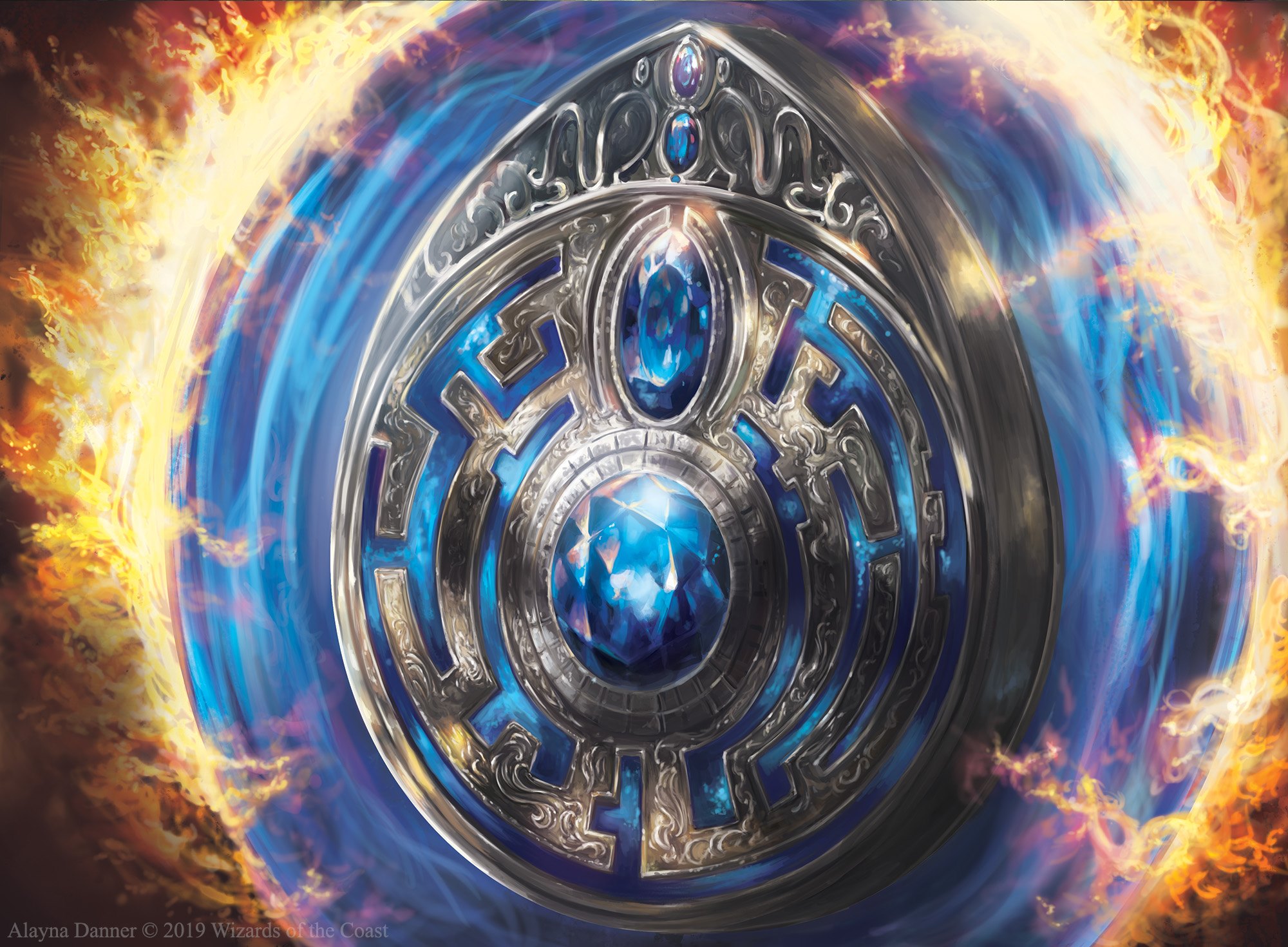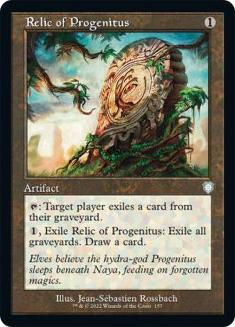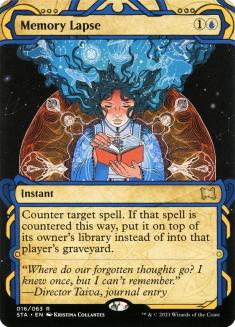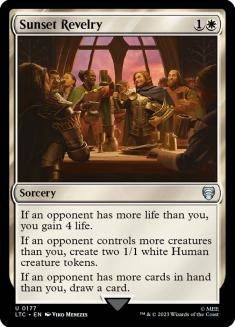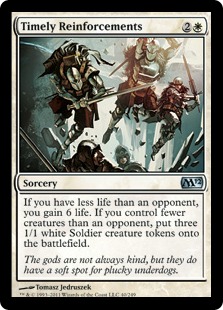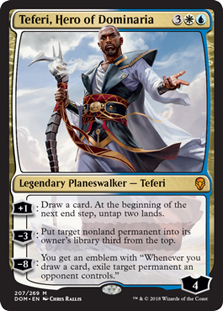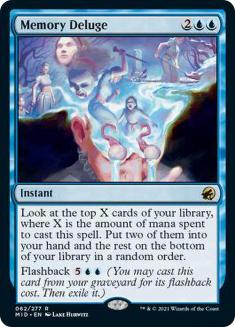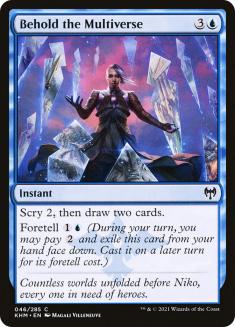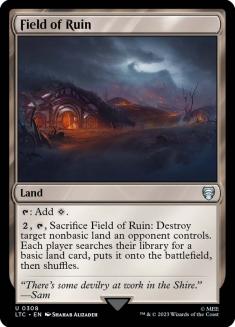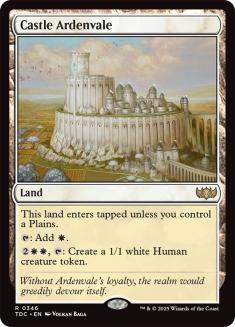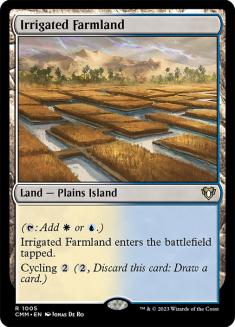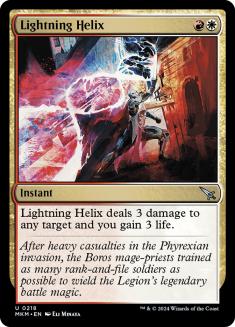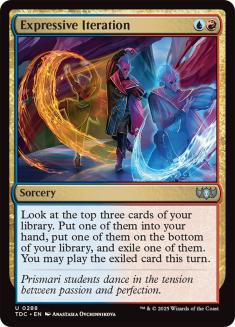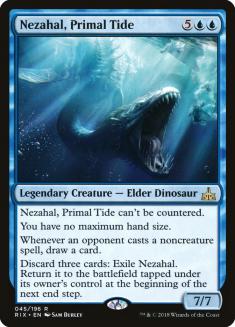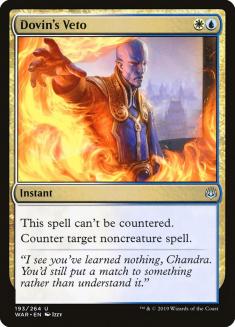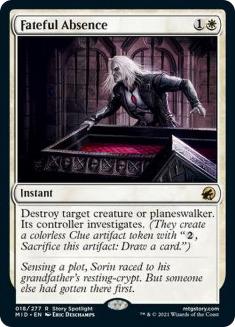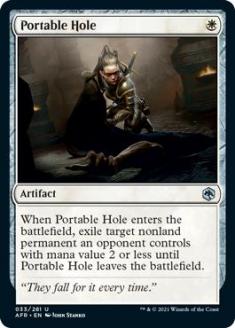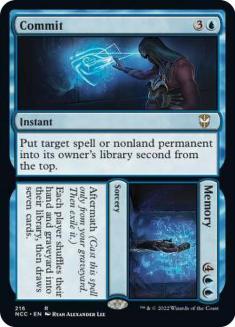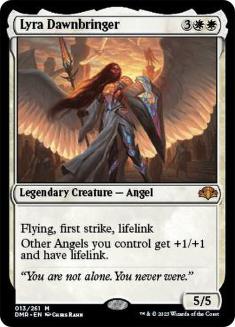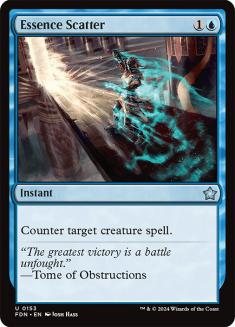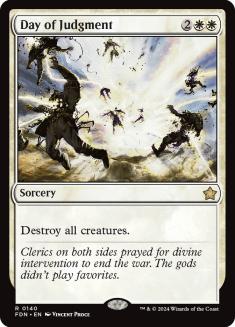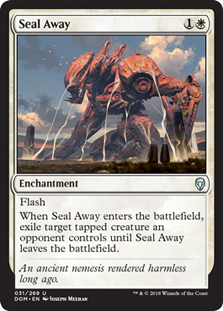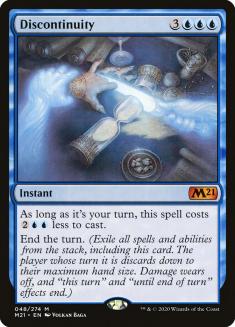I’ve written about control decks two weeks in a row. What is happening?
Last week, I presented a Dimir Control deck that I felt was among the best decks in the format and the one I would have chosen to play. This time is slightly different. Control decks are among some of the strongest decks in Historic and Azorius Control is no different.
To be perfectly transparent, I’d play Mono-Red Phoenix in Historic. Izzet Phoenix is also quite good, although a certain subset of matchups requires interaction that Izzet can’t realistically play maindeck. Mono-Red tends to beat those archetypes through pure aggression. Control is another great option, but not one that I’d play; I enjoy Faithless Looting far more.
I’m here preaching the virtues of Azorius Control because everyone seemed to decide that Izzet was strictly better and I didn’t believe them. Historic was already becoming a format where maindeck graveyard hate would give you a huge edge. Instead of exploring that angle, the Jeskai Control decks continued to add Torrential Gearhulks, Magma Opuses, and other assorted graveyard-reliant nonsense.
Historic’s best decks are based around Dragon’s Rage Channeler, Arclight Phoenix, Torrential Gearhulk, and Kroxa, Titan of Death’s Hunger. One of the few decks in the format that could happily maindeck something like Relic of Progenitus is a control deck. Hell, they could even play Grafdigger’s Cage or Rest in Peace if they wanted.
Think of Relic of Progenitus as playing a form of interaction no different than a counterspell or removal spell. The graveyard decks contain things that you can’t typically interact with. If the metagame has a threat you need to deal with, you find an answer. The graveyard is no different, so something like Relic of Progenitus is all but necessary at this point.
My work on Azorius Control started well before Memory Lapse’s suspension. With Memory Lapse and Archmage’s Charm, the control decks had a wall of countermagic that felt impenetrable. Now that Memory Lapse is gone, control is significantly less sturdy, especially in the early-game. I was very high on control before the suspension, although things are definitely closer in power level now.
Honestly, control didn’t need to be as strong as it was. For the most part, Memory Lapse’s early-game utility was the most important aspect. With cards like Censor, Essence Scatter, and Dovin’s Veto, we still get to maintain some semblance of that.
The last few sets have provided some wonderful tools for control, and my version of Azorius takes full advantage of them.
Planeswalkers (6)
Lands (26)
Spells (28)

If you’re playing Azorius Control, you should ditch the Torrential Gearhulks for Relic of Progenitus. Several of the fringe decks are weak to graveyard hate, plus the graveyard decks typically ignore the majority of your interaction. Maybe I’d support playing the graveyard-reliant card instead of graveyard hate if it were stronger, but it isn’t. You don’t need Torrential Gearhulk for anything specific, plus you get the added benefit of bullying those who insist on playing with it.
With Memory Lapse gone, we need some early defensive tools. Censor was the old option, although I’ve rounded out the counterspell suite with an Essence Scatter and a Dovin’s Veto. In the mid-game, you’ll want access to some hard counterspells, even if they’re narrow.
Azorius’s removal suite is interesting. Baffling End used to be the best option, although Seal Away is uniquely positioned because of creature-lands and Arclight Phoenix. For the most part, Portable Hole is an upgrade to Baffling End as well. Another option is Fateful Absence, which is worse against aggro but actually has useful applications against other control decks.
There’s virtually no difference between Wrath of God and Day of Judgment. Regeneration doesn’t exist on MTG Arena, so both cards have the same text aside from their name. It’s technically better to split them because of Meddling Mage and the like, but I wouldn’t craft Day of Judgment if you already have the Wraths.
Sunset Revelry is a new addition and I’m torn. I’ve been a Timely Reinforcements fan since its inception and I’m still not sure which is stronger. In general, it’s beneficial to go with the cheaper card, which is the route I’ve taken here. On the play, Sunset Revelry can give you an extra card against a one-drop, which is incredible. You also have Relic of Progenitus to help lower your hand size.
The downside is that Sunset Revelry doesn’t trade favorably against everything from Gruul Aggro because of their numerous three-toughness threats. If we wanted another Revelry in the sideboard, I’d be tempted to play a Timely Reinforcements instead.
I shaved a Teferi, Hero of Dominaria, which may seem like heresy. In reality, the majority of decks in Historic can punish you for tapping out on Turn 5. I found myself unable to tap out for Teferi in many instances, so shaving a copy seemed like the appropriate thing to do. Teferi is a means of card advantage, which leads to you eventually winning the game. There are cheaper alternatives and it wouldn’t be surprising if Teferi is eventually phased out of these decks entirely.
Many of the control decks have started playing Memory Deluge in small numbers as a burst of card advantage. I tried Deluge and it was powerful, although more cumbersome than Behold the Mutliverse. The flashback is stronger in attrition-based matchups, but I’m far more concerned about the faster matchups.
Commit is a solid defensive tool that can be a way to lock up the game with Narset, Parter of Veils. With how much Historic has sped up over the last few months, it’s no longer a great inclusion and could be cut if you wanted something else.
When building the manabase, Archmage’s Charm and Wrath of God are the main considerations. When Archmage’s Charm was released, it was difficult to make work. The mana could be awkward, but the new slow lands from Innistrad: Midnight Hunt fix everything. If we needed to, the entire manabase could consist of blue sources. Thankfully, we have some leeway to play non-blue sources.
I’ve included some Field of Ruins and a Plains to fetch. Castle Ardenvale could be another option, but it’s not necessary. If you don’t play Field of Ruin, you could potentially play some Hengegate Pathways. Most decks in Historic are too focused on making their manabases functional to include many creature-lands, but they still show up occasionally. Thankfully, Faceless Haven isn’t common, although Den of the Bugbear can be. Hall of Storm Giants can matter in mirror matches as well.
Search for Azcanta shows up occasionally. You have graveyard hate to keep them in check, but sometimes they can transform it before you find a Relic. Overall, I like playing two copies to remain well-rounded, although it isn’t entirely necessary.
I’d also be happy to add a 27th land. With Relic and Censor for early cycling, 26 lands are serviceable. Irrigated Farmland and the various card advantage spells means you’d prefer to flood rather than be short on lands, which is why I could see erring on more land.
You could play Kaheera, the Orphanguard without altering the maindeck, but I wouldn’t. Not only does the random body not alter your win percentage significantly without something like Solitude to take advantage of it, but you will have creatures in your deck after sideboard in many matchups.
Most of the sideboard is straightforward. Many players have Lyra Dawnbringer in their sideboard for the easy victory against creature decks. I’d fully expect those decks to prepare for them, which means I’m less likely to include them in my sideboard. I’m playing it for now, but that could easily change.
Is Azorius Control better than Jeskai Control?
The answer, of course, is “it depends.”
Azorius provides a manabase that’s slightly less clunky and more resilient to Field of Ruin. Some Jeskai decks don’t play basic lands at all, and those who do only have a maximum of one or two Islands. Control mirrors are still mostly a battle of mana, so being on the Field of Ruin side of things can be a huge edge.
Once they play a basic land, I’d be willing to aggressively use Field of Ruin. However, note that their basic land will often be the last land they play, so it could sit in their hand for a while without you knowing. There are also utility lands you want to hit at some point, but those are also lands they’ll typically want to deploy early, so you’ll have some idea of what you’re dealing with.
Another thing to keep in mind is that Jeskai will have fewer answers to Hall of Storm Giants. Naturally, you’ll have to be careful of them taking advantage of you tapping so much mana in your main phase, but it’s not a bad plan if you’re getting crushed in the card advantage department.
The mana is stronger as well. You don’t have to worry about being able to cast Lightning Helix and Expressive Iteration early. Azorius’s issues are going to stem from having double white on Turn 4 for Wrath of God and that’s about it. Overall, Azorius is much stronger against aggressive decks. With maindeck Relic of Progenitus, you’re also a favorite against the Jeskai decks attempting to abuse Torrential Gearhulk.
Azorius will typically have more dead cards in Game 1 than Jeskai, but that’s only because they’re stronger against creature decks in general. If you happen to find a Relic of Progenitus early enough, their copies of Torrential Gearhulk, Unholy Heat, and Mizzix’s Mastery will also be dead, giving you a huge advantage.
After sideboarding, very little matters in the control mirrors except how many Nezahal, Primal Tides each player has and whether or not they have a direct answer. Do you run Discontinuity to deal with Shark Typhoon and opposing Nezahal, Primal Tides? It’s up to you. Control is still strong in Historic, so I’m happy devoting some slots.
Azorius Control has many advantages over the other control decks in the format. Plus, it has a fighting chance against every deck in the format. If you’re joining an open tournament with an unpredictable metagame, there might not be a better deck to bring than Azorius Control.
Sideboarding
Finally, the sideboarding guide. Enjoy!
VS Jund Sacrifice
Out:
In:
VS Mono-Red Phoenix
Out:
In:
VS Izzet Phoenix
Out:
In:
VS Gruul Aggro
Out:
In:
VS Jeskai Control
Out:
In:
VS Rakdos Arcanist (Lurrus)
Out:
In:
VS Simic Merfolk
Out:
In:

